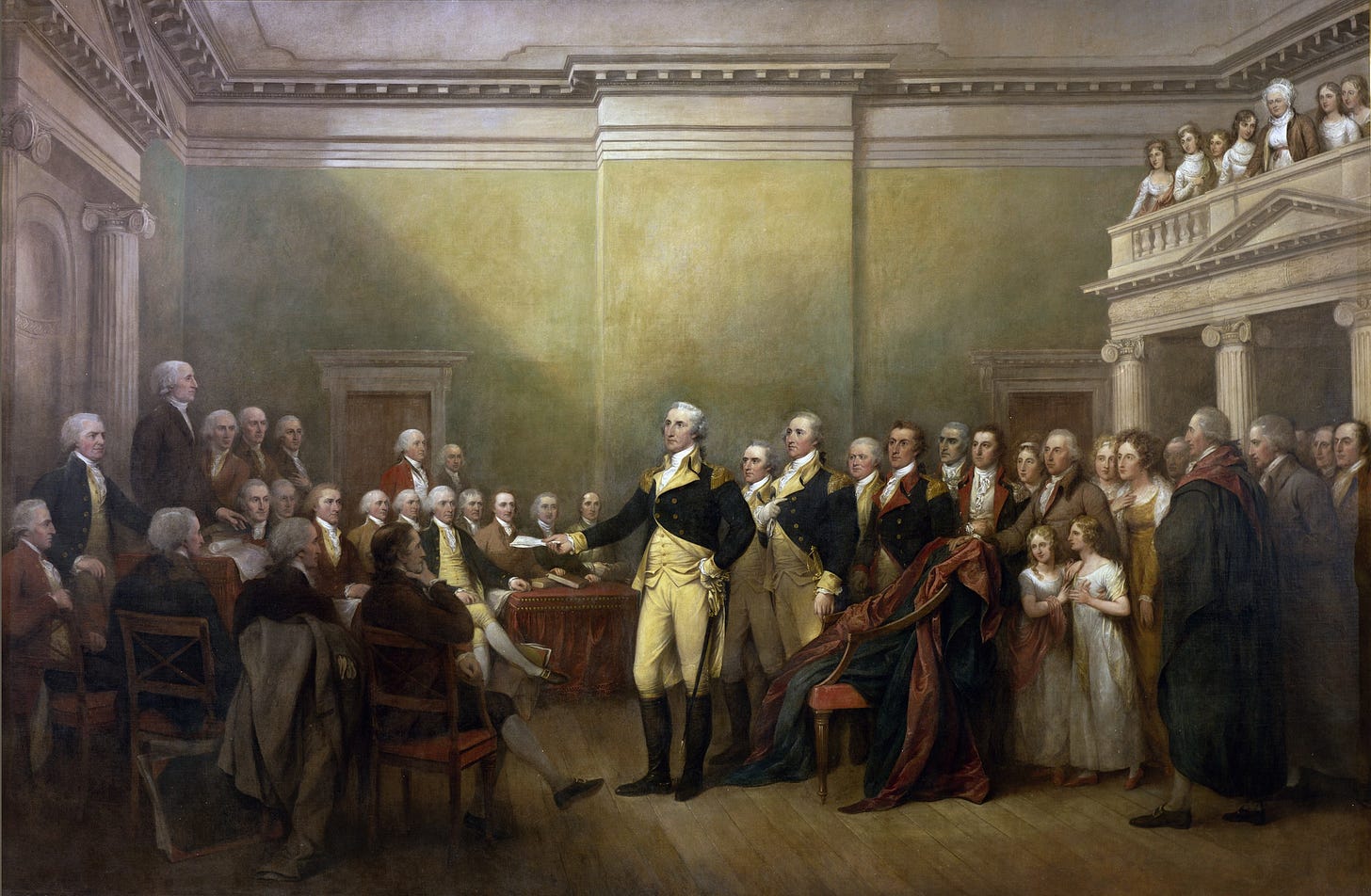December 23, 2023
On this day in December 1783, General George Washington stood in front of the Confederation Congress, meeting in the senate chamber of the Maryland State House, to resign his wartime commission. Negotiators had signed the Treaty of Paris ending the Revolutionary War on September 3, 1783, and once the British troops had withdrawn from New York City, Washington believed his job was done.
“The great events on which my resignation depended having at length taken place; I have now the honor of offering my sincere Congratulations to Congress and of presenting myself before them to surrender into their hands the trust committed to me, and to claim the indulgence of retiring from the Service of my Country,” he told the members of Congress.
“Happy in the confirmation of our Independence and Sovereignty, and pleased with the opportunity afforded the United States of becoming a respectable Nation, I resign with satisfaction the Appointment I accepted with diffidence.”
“Having now finished the work assigned me, I retire from the great theatre of Action; and bidding an Affectionate farewell to this August body under whose orders I have so long acted, I here offer my Commission, and take my leave of all the employments of public life.”
In 1817, given the choice of subjects to paint for the Rotunda in the U.S. Capitol, being rebuilt after the British had burned it during the War of 1812, fine artist John Trumbull picked the moment of Washington’s resignation. As they discussed the project, he told President James Madison: “I have thought that one of the highest moral lessons ever given to the world, was that presented by the conduct of the commander-in-chief, in resigning his power and commission as he did, when the army, perhaps, would have been unanimously with him, and few of the people disposed to resist his retaining the power which he had used with such happy success, and such irreproachable moderation.”
Madison agreed, and the painting of a man voluntarily giving up power rather than becoming a dictator hangs today in the U.S. Capitol, in the Rotunda. It hung there over the January 6 rioters as they tried to overturn the results of the 2020 presidential election and put in place their candidate, who insisted he should remain in power despite the will of the American people.
And it hangs there today, representing 240 years of the American republic, as that same man promises that if he is reelected, he will be a dictator only “on day one.”
[Image: John Trumbull, General George Washington Resigning his Commission, 1824, public domain through Wikimedia Commons.]
—
Notes:
John Trumbull, Autobiography, Reminiscences and Letters of J. Trumbull, from 1756 to 1841, p. 263, at https://archive.org/details/autobiographyre01trumgoog/page/262/mode/2up
https://founders.archives.gov/documents/Jefferson/01-06-02-0319-0004

What a contrast.
That first president so much closer to Cincinnatus, so famous for the power he gave up.
Trump is of course his diametrical opposite -- but for the very simple reason that America finally grew a class of billionaires who fed only on the cancers of commercialism: the most cynical packaging, numbering, labeling, commodifying, and monetization of all life.
America, where the greatest universities in the world reigned from the Justin Morrill land grant legislation of 1862 to the Powell memo of 1971, when the rich united in gutting, rotting, turning the best inside out instead for schools of business -- for bankers, standardized testers, phalanxes of totally dehumanized fellow predators.
Yes, there's a fat, orange Donald Trump -- in such contrast to Washington. But there's such a deep, extensive, festering history buoying the fat orange one.
tfg's supporters have never learned the history of this country. They need to read your letters!